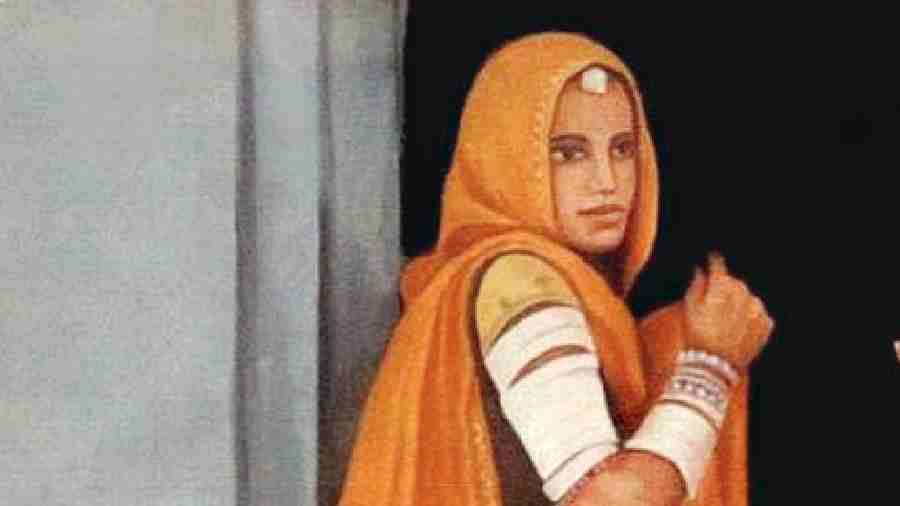Book: Lilavati: A Life
Author: Govardhanram Tripathi
Publisher: Penguin
Price: Rs. 399
It is difficult to slot Tridip Suhrud’s translation of Lilavati Jivankala by the Gujarati writer, Govardhanram Tripathi (1855-1907), into any familiar genre of ‘life-writing’. Although it is ostensibly the life-story of Govardhanram Tripathi’s deceased daughter, Lilavati, written three years after her untimely death in 1902, the structure, tenor and purpose of the book defy any easy classification. It could be read as an elegy, a hagiography, a meditation, or just simply a didactic text that deployed Lilavati’s story to convey something larger.
Although a detailed translator’s introduction makes reading Lilavati easier, the best way to approach the text is to keep this for later. There are six chapters in the book. The first titled, “The Sources of Lilavati’s life”, the second, “The Confluence of the Sources of Life”, the third, “Yajamandharma in Father’s House”, the fourth, “The Flowering”, the fifth, “Affective Universe”, and a final chapter titled “Spiritual Awakening”.
It is the first chapter that sets out the unusual tenor of this book and anticipates the progression of the later chapters. Interestingly, the author begins by focusing on the ‘sources’ of the life of his daughter. What we get to know from this initial point of entry is that there really wasn’t much left as material ‘sources’ of Lilavati’s life beyond a few letters written to her by the author and his wife, Lalitagauri, when their daughter was in her married home, and two letters written by Lilavati herself. The first, soon after her marriage, and the last, a few months before she returned to her parental home when she was diagnosed with tuberculosis. On the letters that were recovered from her belongings after her death her father wrote, this was the only wealth she possessed in a rather “impoverished life”.
At this point, we are not quite sure why Lilavati had to lead an impoverished life when her own family was reasonably well-placed. But the theme of poverty is deemed integral to the telling of Lilavati’s life if only to underscore its meaninglessness in the larger context of her spiritual endowments. Among the other sources of Lilavati’s life, Govardhanram refers to Lilavati’s small but significant collection of Hindu didactic texts received from her tutor, and the fairly large collection of letters of ‘guidance’ she received from her parents, from her father in particular. Then there are memories of conversations between father and daughter dating back to times when she was eight or nine and, finally, her last spoken words in a state of delirium days before she died. Selective content from these letters, prose and verse pieces from the didactic texts, fragments of conversation between Lilavati and her parents and, finally, her delirious mumblings return in a recursive logic in subsequent chapters to bring to life her intellectual, affective and spiritual worlds. The specific details of Lilavati’s life — the year of her birth, her education at home, her betrothal and marriage into a Brahmin family fallen into genteel poverty and her illness and death — are spelt out in Chapter four. Govardhanram justifies this late inclusion of her biographical details by insisting this was not a biography in the Western sense of the term. Her life merited attention not because she was a historically significant figure but because she was an embodiment of the virtues he wanted young people of his society to imbibe.
Tripathi, as Suhrud explains in his lucid introduction, was like many Gujarati intellectuals of his time caught in the maelstrom of Western modernity on the one hand and colonial indignities on the other. Even while he trained as a lawyer he took to writing as the only way to navigate his sense of unease. The search was for a new definition of selfhood that drew upon the rich reserves of Indic thought and practice. Saraswatichandra was his first novel in four volumes and Lilavati his last. There were numerous prose pieces and an autobiographical Scrap-Book in between. In all of this, Tripathi struggled to outline his svadharma in terms of a “Philosophy of Consumption”. He used the term, ‘consumption’, in its old but rather awkward sense — ‘to be consumed’. Lilavati and other characters in his novels were an embodiment of this philosophy in their willingness to allow their ‘selves’ to be ‘consumed’ by the calling of duty, sacrifice and self-transcendence.
It is hard to gauge if Tripathi’sanguish as a bereaved father eroded his faith in his philosophy but as Suhrud argues, Lilavati’s death marked the end of his creative life. In translating what one could read as the ‘Passion of Lilavati’ rather than her life, Suhrud completes a body of serious research into the writings of Tripathi and a group of Gujarati literary modernists and offers us an insight into the social and intellectual worlds of pre-Gandhian Gujarat like never before.











